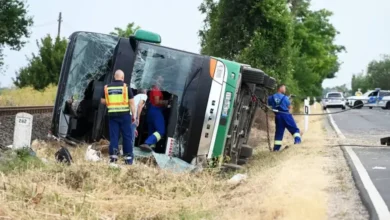Children from Kharkiv region committed sabotage on the railway, burned down an administrative building and a military vehicle

In the conditions of war, Ukrainian children show different forms of involvement in the fight against the enemy and in public life. Some draw pictures for the military, collect funds for drones, organize charitable initiatives and support volunteers. Others, succumbing to the manipulations of enemy propaganda, unknowingly become a tool in the hands of the Russian special services. The tragedy of such stories is that instead of building the future of their country, they unknowingly destroy it. A recent case in the Kharkiv region vividly demonstrates how children can find themselves at the center of a hybrid war.
The Security Service of Ukraine, together with the National Police, detained four teenagers aged 14 to 16 (three boys and a girl), who are suspected of carrying out a number of acts of sabotage in the region. About it on March 7 reported SBU press service. According to the investigation, they acted under the direction of the Russian special services and carried out tasks that caused damage to Ukrainian infrastructure and military facilities.
Two of the detained boys are brothers, and all four live in neighboring settlements. The investigators found out that they acted as part of two separate agent groups, which were created by Russian curators. The first group, according to law enforcement officers, sabotaged the railway. In the Berestyn district, they broke the metal door of the relay cabinet, which ensured the operation of railway automation, poured a combustible mixture over it and set it on fire. This could lead to serious violations in the functioning of railway transport and a threat to traffic safety.
In addition, they set fire to the service multi-vehicle of the Armed Forces of Ukraine, which was undergoing technical inspection after completing tasks on the Eastern Front. The second group broke a window in the building of the local village council, then doused the windowsill with a flammable substance and set fire to the premises. According to the SBU, all these actions were coordinated through Telegram channels, where teenagers were promised quick and easy money for completing such tasks.
This case demonstrates a dangerous new trend in war — the involvement of children in subversive activities. The enemy uses the economic hardship, psychological vulnerability and lack of critical thinking in teenagers to draw them into crime. Social media has become a major recruitment tool, as anonymity and remote control allow curators to remain invisible.
The detainees were charged with sabotage, intentional destruction of property, and obstruction of the Armed Forces of Ukraine. The question of the responsibility of the persons who recruited them was also raised. However, the main question is how to prevent the further use of children in war. Ukrainian society must realize the danger of such a phenomenon and strengthen educational work among young people.
“On the basis of the evidence collected by the SBU employees, the perpetrators were notified of suspicion in accordance with the crimes committed under three articles of the Criminal Code of Ukraine:
– Part 2 of Article 28, Part 2 of Article 113 (sabotage committed under martial law by a prior conspiracy by a group of persons);
– Part 2 of Article 28, Part 2 of Article 194 (deliberate destruction of someone else’s property by arson, committed by a group of persons in accordance with a prior conspiracy);
– Part 1 of Article 114-1 (obstructing the lawful activities of the Armed Forces of Ukraine and other military formations during a special period)”. – reports the SBU.
This case is a reminder that information warfare is just as dangerous as combat. Russian propaganda targets the most vulnerable groups – children, who, due to lack of life experience, can easily believe in promises and false ideas. That is why it is important to raise the level of media literacy among young people, teach them to recognize manipulation and understand the consequences of their actions.
Ukraine should develop a comprehensive program to protect teenagers from recruitment, which will include both strengthening information security and working with families, schools and communities. Preventing such cases requires a systematic approach, because every child who has become a tool in the hands of the enemy is not only a tragedy for an individual family, but also a threat to national security.
This story should become a signal for action for the state, society and parents. Only by joining forces, it is possible to protect Ukrainian children from the influence of enemy propaganda and prevent such tragedies from repeating in the future.





